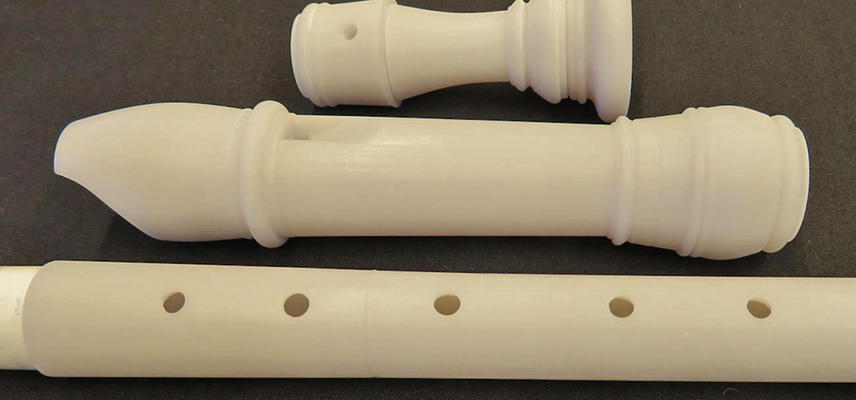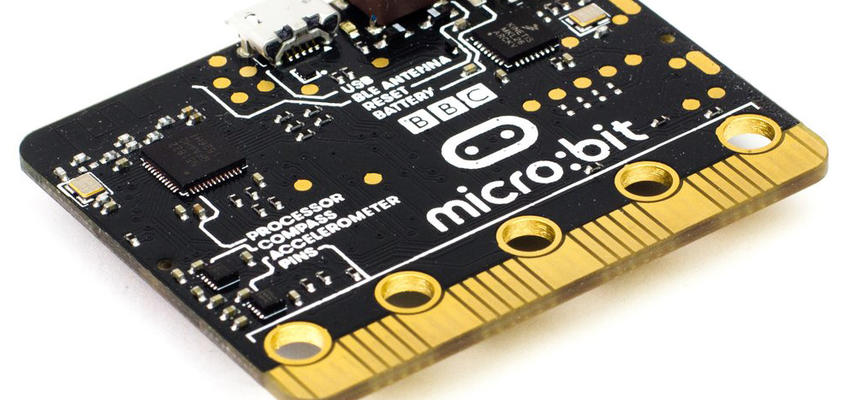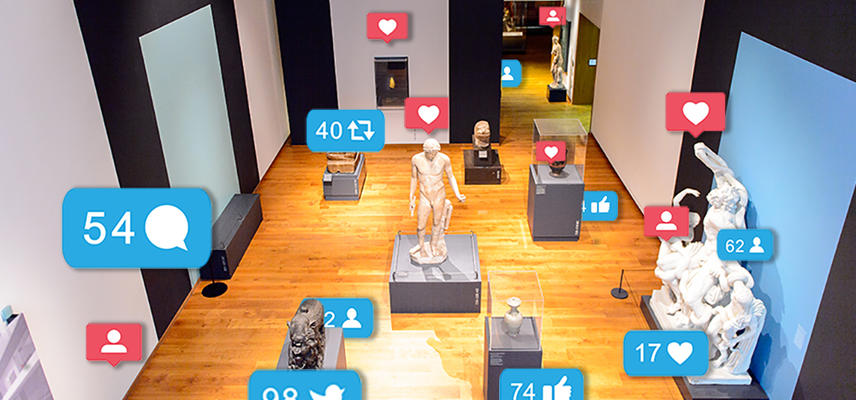Digital Engagement in GLAM
Engaging visitors through digital means and using digital technology to support research and teaching are key ambitions of the GLAM Digital Strategy. Here we explore some of the initiatives we are undertaking to understand more about our audiences and how digital technology can help meet their needs and expectations.
The GLAM Digital Strategy aims to democratise and drive access to our collections for the purposes of research, teaching and engagement. The strategy has, in its initial three years from 2016-2018, largely focussed on projects to implement infrastructure and stabilization - networks, data centres, digitisation equipment, IT support systems, and software. These are expensive and often invisible but nonethelss crucial to support the development of overlying dependent services for both our staff and our public users, such as online collections, digital preservation, ticketing and CRM, in-gallery experiences, flexible working, data collection and reporting, and many more.
Now that we have brought these infrastructural elements up to standard and the six GLAM institutions are working in ever more cohesive and shared ways, we are looking to build and improve the way digital platforms serve our constituent users. But who are they? In 2018 we decided to undertake a swathe of audience research in order to find out.
In addition to amalgamating exisiting audience research we also had some new research questions:
- Who are our users?
-
Why are they here?
-
What is the intersection between physcial and online users?
-
What can we find out about pre-and pre- and post-visit behaviour?
What did we do?
We enlisted the help of human-centred design agency Modern Human Design and together created a three-month programme of consecutive reseach strands using different methodologies to investigate users' behaviours and motivations before, during and after a visit. We were also interested in investigating how visitors expereince cultural institutions more broadly and the role digital plays in those experiences. The study was distinctly qualitative in nature and included visitor shadows and exit interviews, pre-and post visit diary studies, and digital-only interviews. Participants in pre-visit and the digital-only research were sourced through an online intercept survey hosted on 38 of GLAM's most popular webpages. Overall, 98 participants took part in the one-to-one research with more than 600 survey respondents. Modern Human were also able to draw on relevant literature and learning models, as well as a pool of more than 1000 exit surveys (quantitative) gathered as part of GLAM's membership of the ALVA benchmarking survey scheme.
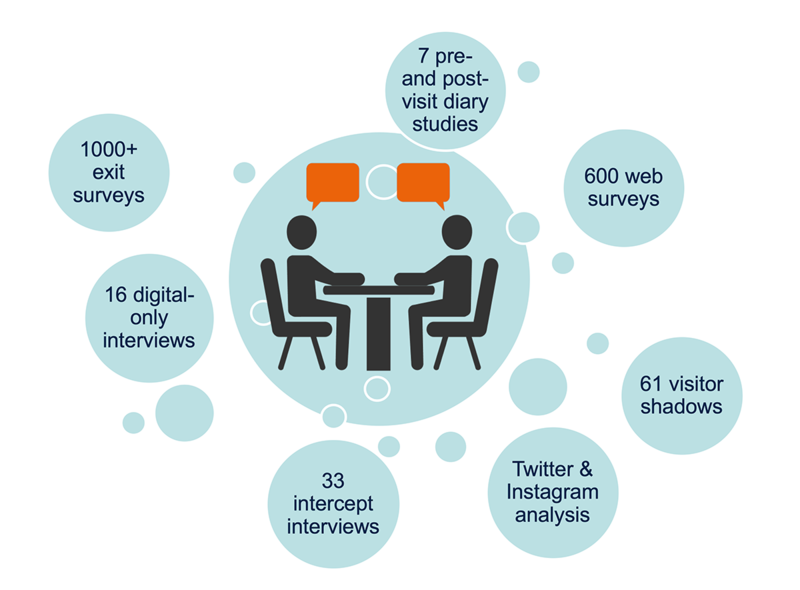
In addition to the audeince research, we also ran a consultation on user services with a cross-section of GLAM staff drawn from sections working with different types of users, from public engagement and outreach staff to collections research and conservation. Overall, 42 staff took part in the consultation.
Finally, we did a market review of more than 100 digital engagement projects from across the cultural sector and across the globe. By evaluating case studies from the past five years and interviewing key stakeholders at other institutions, we were able to draw a rich picture of trends and innovation, not just in technology but in changing audience needs and appetites.
What did we find out?
Some of the key findings included:
- Staff expressed a desire to make better use of digital technologies but identified gaps in knowldge, training, and the approproate systems and processes to support them in this.
- Some of the most successful diigtal projects in the sector are in fact partnerships between museums and technology companies where each party brings specific expertise to the partnership.
- Cultural institutions are increasingly using digial technology to create particpatory or personalised experiences.
- Online marketing, social media and mobile are becoming increasingly important ways of connecting to audiences - 33% of UK visitors to cultural attractions are influenced by online marketing and a similar number intend, or do, leave feedback on review and social sites. In a similar vein, huge tranches of personal documentaion of visits - especially images - are being shared through private channels such as Whatsapp.
- Visitors to Oxford experience the city like an 'academic Disneyland' where the GLAM instutions support an idea or vision of the University rather than individual experiences.
- Visitors are less likely to use their phones as an active part of engaging with displays but instead reserve personal screen time to time-outs (on benches, in the cafe, etc.).
- Most online searchers of cultural material - whether they be researchers or hobbyists or students - start with Google and subsequently stuggle to recall where they find information.
The Audience Framework
The various strands of research enabled Modern Human to create an Audience Framework for GLAM - a bespoke segmentation model that defined both exisiting and potential users by motivation and need (rather than by demographics or preferences as other segmentation models tend to do). The framework consists of six archetypes that are in turn underpinned by a number of 'pen portraits' (case studies of archetype variants). Whilst the archetypes are fixed they could have an infinite number of pen portraits attached to them, and individuals can move between them depending on the context of their visit, or even within the course of a single visit. For example, a person visiting a museum with their children on a Saturday could be described as a Facilitator, but if they then returned the following week on their own during a lunch hour to see a specific exhibition, they would then take on the role of an Engaged Explorer. The Audience Framework is illustrated below:
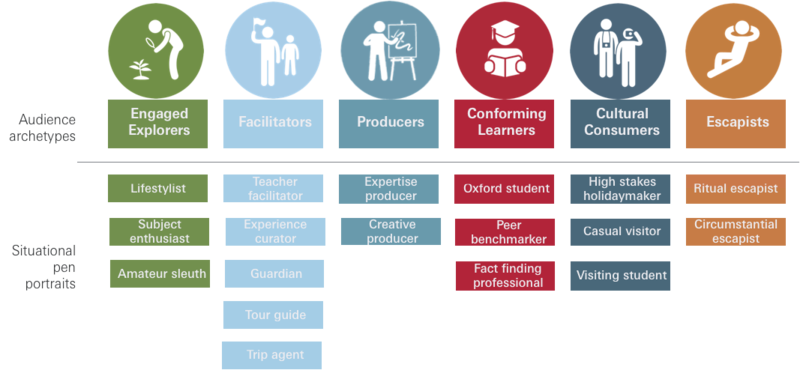
The six archetypes broadly split into two camps - those who use GLAM as a resource for active learning or engagment (Engaged Explorers, Producers and Conforming Learners) and those who use GLAM as a backdrop for their primary activity such as relaxation, finding something to do with friends, etc. (Cultural Consumers, Escapists, and Facilitators). Early extrapolation of quantiative data suggests there is around a 50/50 split between these two groups among GLAM's three million actual and six million online visitors. You can read the full Modern Human Audience Framework report (.pdf) here.
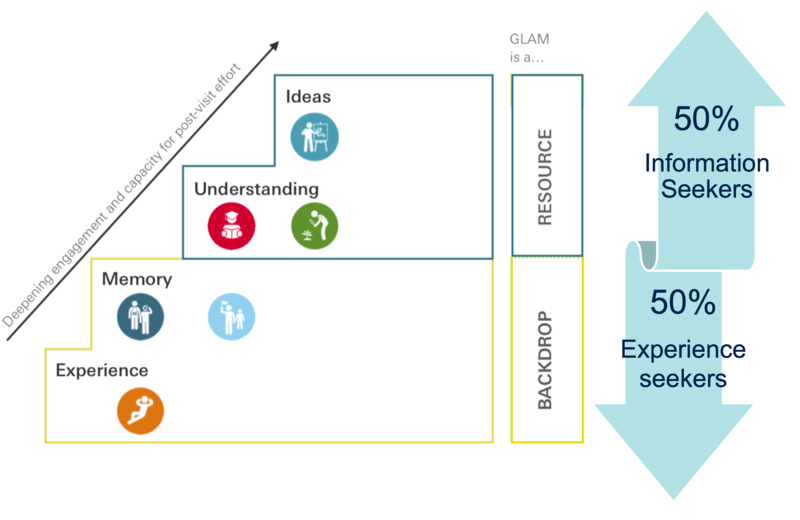
Next steps
We took this information and used it to create a user-centred series of statements that brought together the archetypes with the GLAM Digital Strategy's principles and wider University strategic priorities. We called this the Blueprint, and it outlines a practical way forward to design and implement future projects that have a real and measureable impact on the user experience. You can read the full Blueprint in full Blueprint report (.pdf) here. We are also using the Framework to help us map out user journeys across our sites, idenitifying user expectations, needs, and opportunities at key moments before, during and after a visit.
A scheme to support contactless donations at the six GLAM sites was launched in April 2019, with freestanding kiosks installed that allow visitors to 'tap to give' £5.

The trial uses fixed-point terminals provided by GW Devices. Visitors simply tap their contactless debit or credit card for a smooth and seamless transaction. The donation amount is being kept to a single option of £5 for the duration of the trial in order to simplify processing and provide benchmarking data to help support testing of the positioning and messaging on the terminal screen and surrounding plinths.
The introduction of contactless donation technology reflects changing payment habits in the UK. 2016 was the first year in the UK in which more payments were made by card than with cash, and contactless is fast becoming the preferred method for payments under £20. Eight out of ten debit cards and six out of ten credit cards are now contactless.
Across the cultural and charitable sectors, contactless is now offering a valuable secondary method of support alongside more established mechanisms, such as regular giving through Direct Debit. Numerous charities, including Cancer Research UK, have experimented with 'contactless shop windows' and 'smart benches' in town centres, while the Church of England digital giving has reported positively on trials with contactless payment devices.
However, while contactless is very popular in the UK, it isn’t the same story everywhere. In the US, for example, mobile phone payments are gaining more traction than contactless cards, and tourists still often prefer to carry cash in local currency to avoid charges. GLAM receives a lot of international visitors so it will be interesting to see how take-up of the scheme might vary among different audience segments and how it will fare alongside traditional donation mechanisms.


